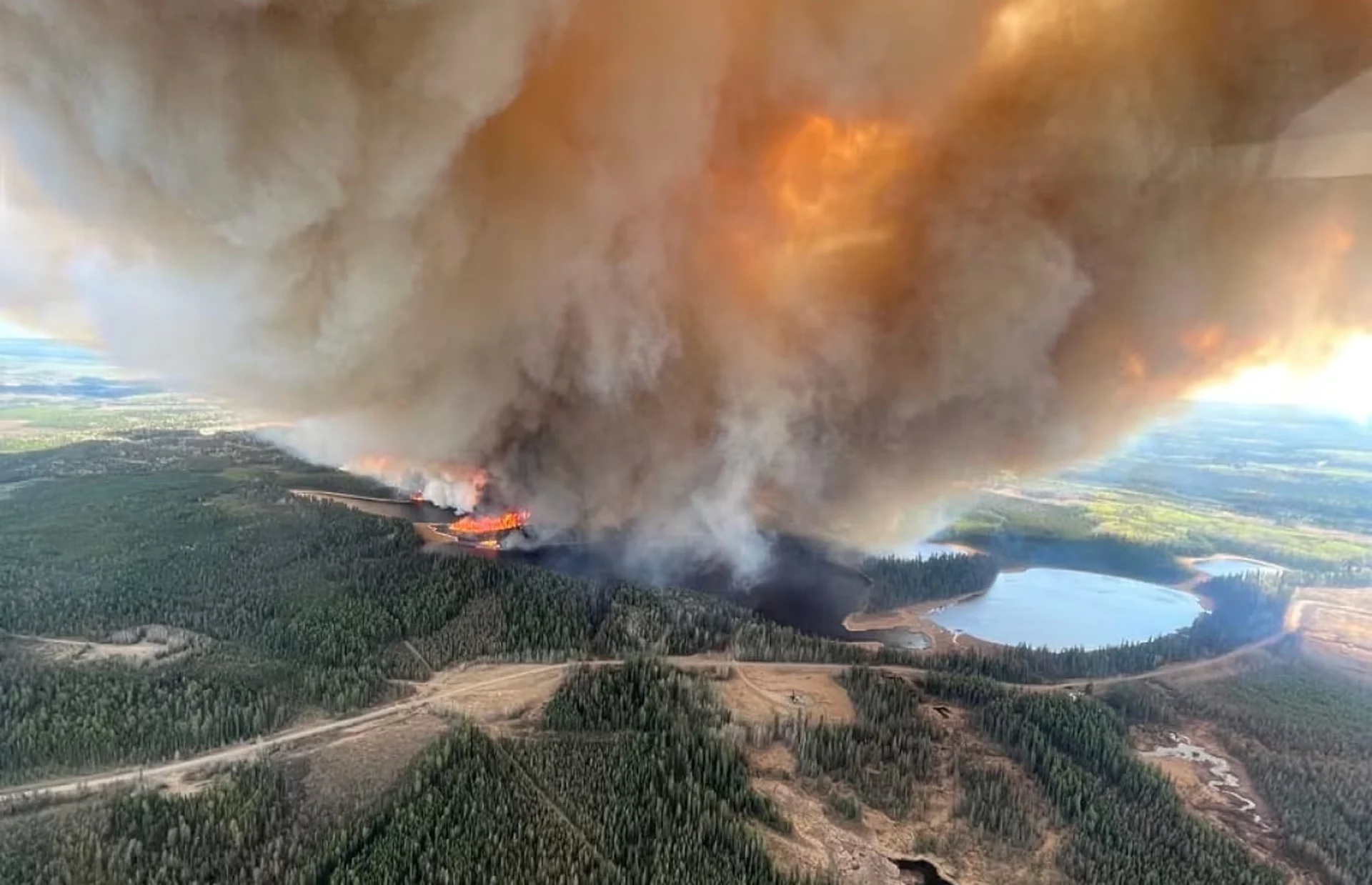
Close to 30,000 people now displaced as Alberta continues battling wildfires
A change in weather conditions has helped firefighters fight the wildfires that have forced thousands of Albertans to flee their homes this past week, officials from the Alberta Emergency Management Agency and Alberta Wildfire said Sunday.
"Today we've seen some light scattered showers in the southern part of the province, as far north as Fox Creek. The good news is that it did have an impact on fire behaviour today in that area," Christie Tucker, information unit manager with Alberta Wildfire, told an afternoon news conference in Edmonton.
"It allowed firefighters to get a chance to work on the areas of some wildfires that they haven't been able to get close to because of extreme wildfire behaviour."
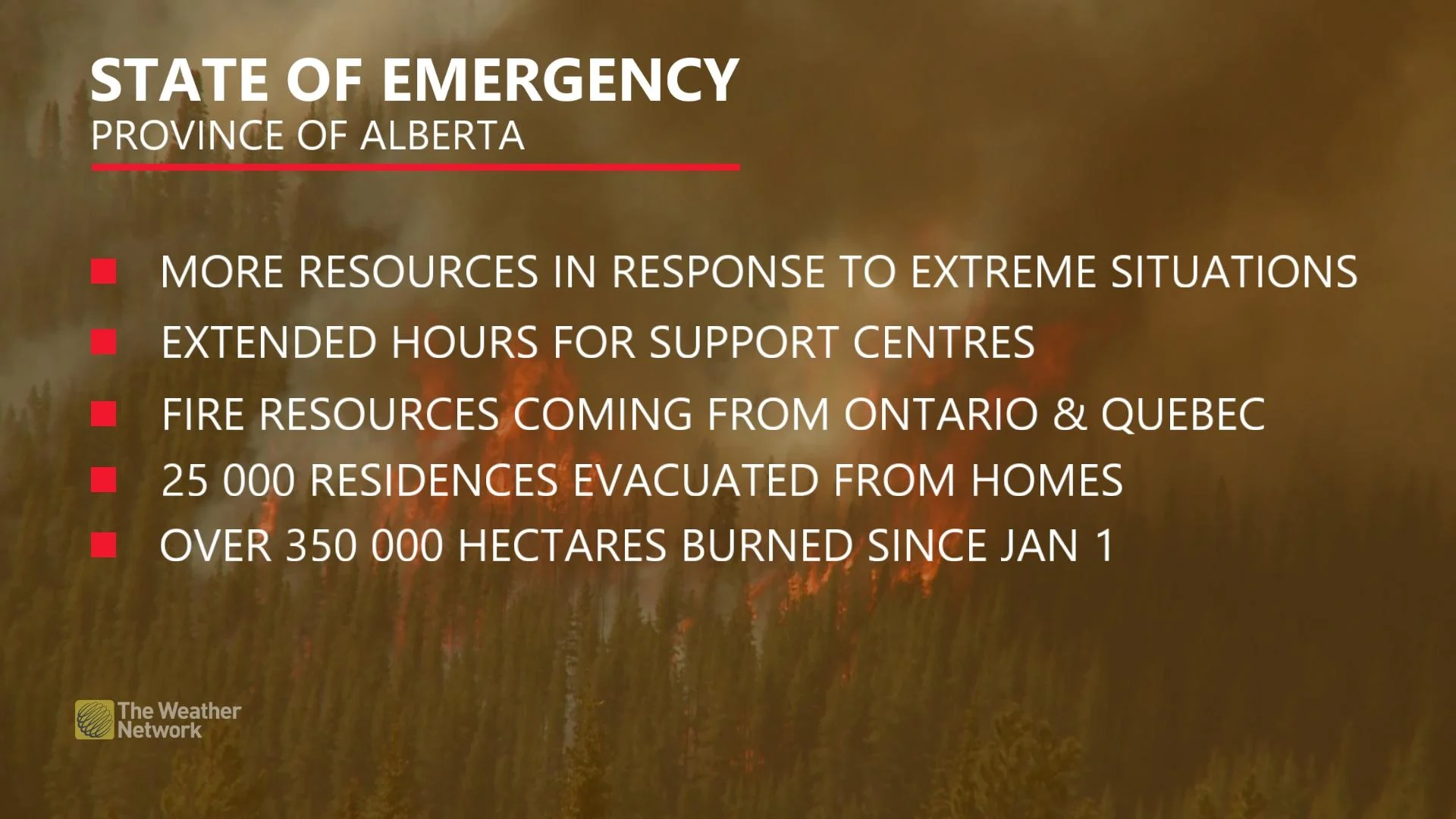
RELATED: Extreme wildfire danger: Is there any relief in sight for Alberta?
While the province is battling fires using air tankers and helicopters, Tucker said the change in weather conditions has been most beneficial to firefighters on the ground.
"When we see that lifting in conditions, a little bit of humidity and coolness, it means that our firefighters can actually get a little closer to areas of the fire that they had not been able to get into before and that can be very big for us," she said.
"Unfortunately in the north of the province, [firefighters] will continue to be challenged with the conditions that they're seeing. Our priorities today have been and always are wildfires that are threatening communities or human lives."
108 fires, 31 out of control
As of Sunday afternoon, there were 108 active wildfires across Alberta, with 31 wildfires classified as out-of-control. The wildfires have forced more than 29,000 Albertans from their homes.
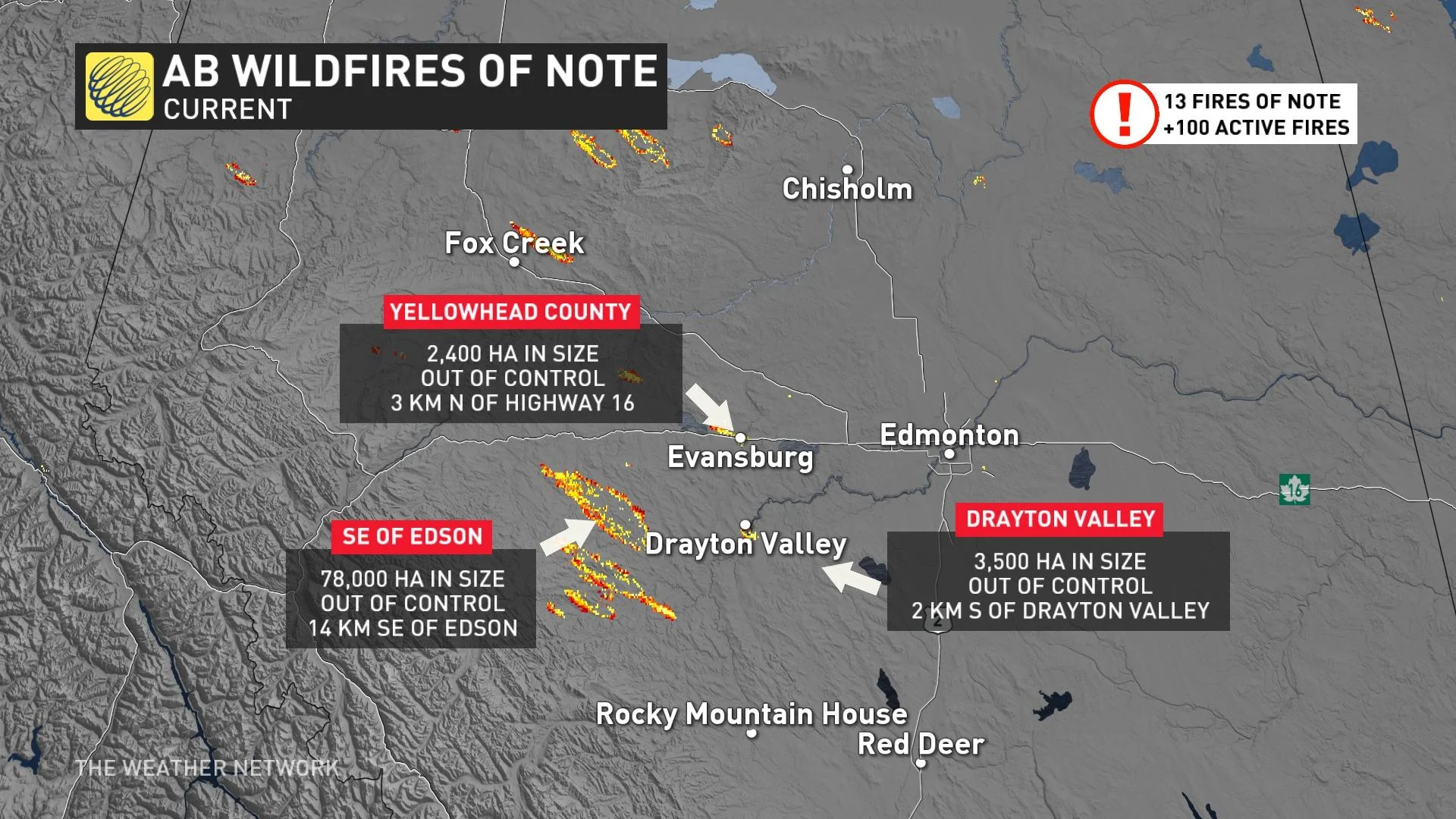
SEE ALSO: Here's how you can monitor the wildfire situation in Alberta
Conditions remain volatile as officials say the extent of damage is difficult to determine as the situation develops.
"In some cases, ongoing smoke and fire conditions prevent us from fully assessing property loss and until we can do that, we are limited in the details we can provide," said Colin Blair, executive director of the Alberta Emergency Management Agency. "But our first priority is protecting lives and dealing with the emergency response."
DON'T MISS: Wildfire terms every Canadian should be familiar with
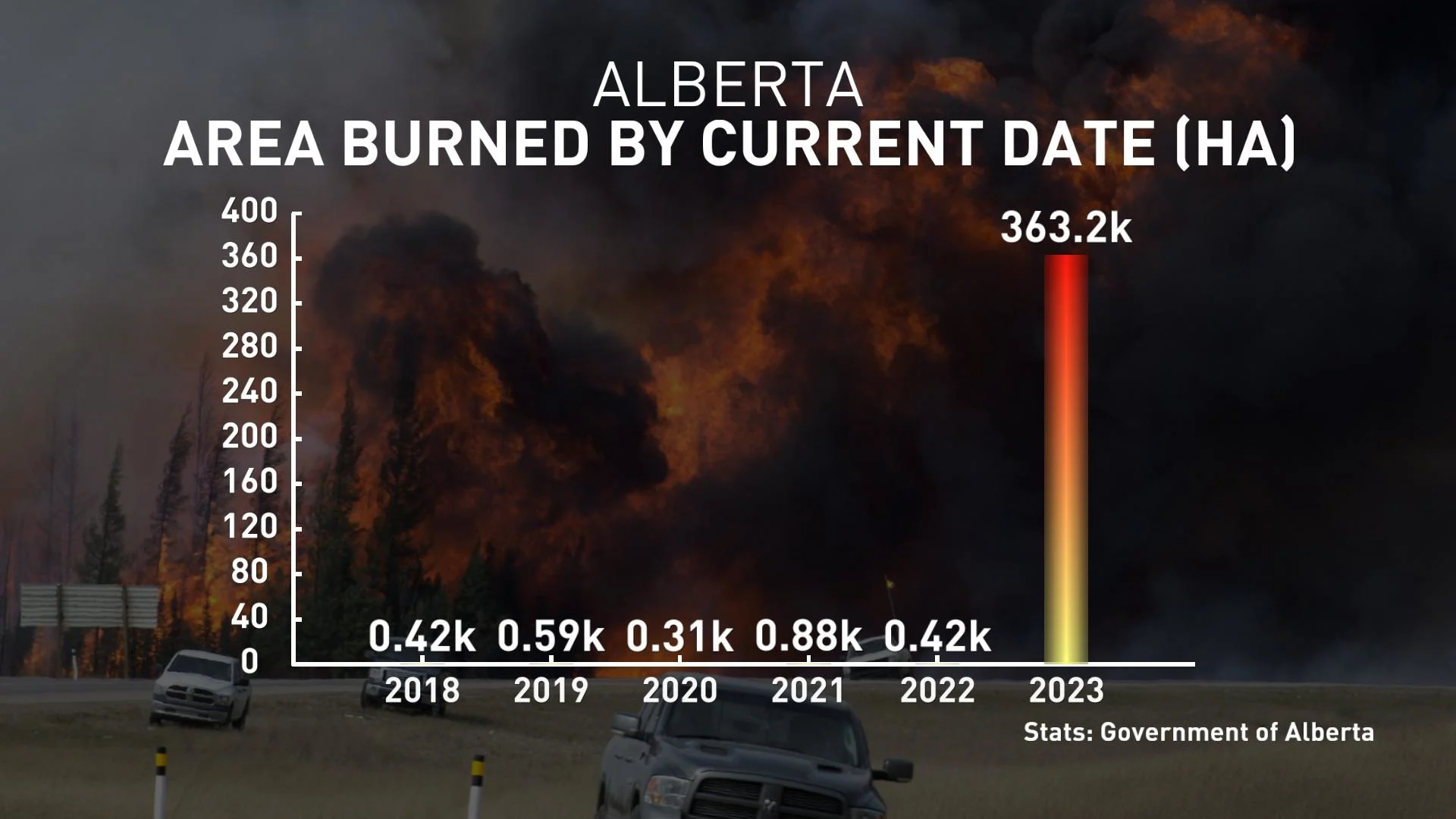
Blair asked for patience from rural residents who have been displaced by the fires.
"I've got a great sense of gratitude for them for following the evacuation orders. This is a very significant life event to be taken out of your home as a result of a wildfire," he said.
"But fundamentally, we do have to wait for the qualifiers to get under control before we can start making those steps."
Help from across country, and U.S.
Alberta has received help from across the country with additional support expected from Montana.
An incident management team from B.C. arrived Sunday to take over the wildfire near Edson and the Pembina complex in the northern Rocky Mountain House area.
Firefighters from Ontario and Québec arrived in the province Saturday and have been deployed to assist in various regions.
The change in weather away from the hot and windy conditions is welcome, but more rain will be needed, said a meteorologist with Environment and Climate Change Canada.
"We did see some much needed rain overnight last night, actually, primarily to the north and west of Edmonton is where we did see the heaviest rain," Erin Staunton said in an interview with CBC on Sunday.
Overnight Saturday into Sunday morning, five to 12 millimetres of rain was recorded in some of most affected areas such as Edson, Hinton and Jasper.
Scattered showers are expected to continue throughout Sunday afternoon, with some heavy localized rainfall of between five to 10 millimetres.
"Unfortunately, it won't be quite the widespread heavy rain that we really need through the area," Staunton said.
WATCH: Be prepared for a wildfire evacuation with a 'grab-and-go' bag
On Saturday, Alberta declared a provincial state of emergency.
Declaring a state of emergency is a legal mechanism that provides the provincial government with a higher level of intergovernmental co-ordination by working with municipalities, organizations and businesses to support evacuated residents.
It also allows around-the-clock monitoring of the situation, access to emergency discretionary funds and the ability to mobilize additional support.
Premier Danielle Smith visited evacuees at the Edmonton Expo Centre on Sunday morning.
Smith said her team has been in contact with the Prime Minister's Office, with plans to speak to Prime Minister Justin Trudeau within the next 24 hours.
"We know that potentially there's some military supports that they can offer. We're going to see if they have any firefighting expertise," Smith said in an interview with CBC.
"We'll see if they have any engineering support in the event that there needs to be berms or fire breaks. We're going to see water treatment specialists."
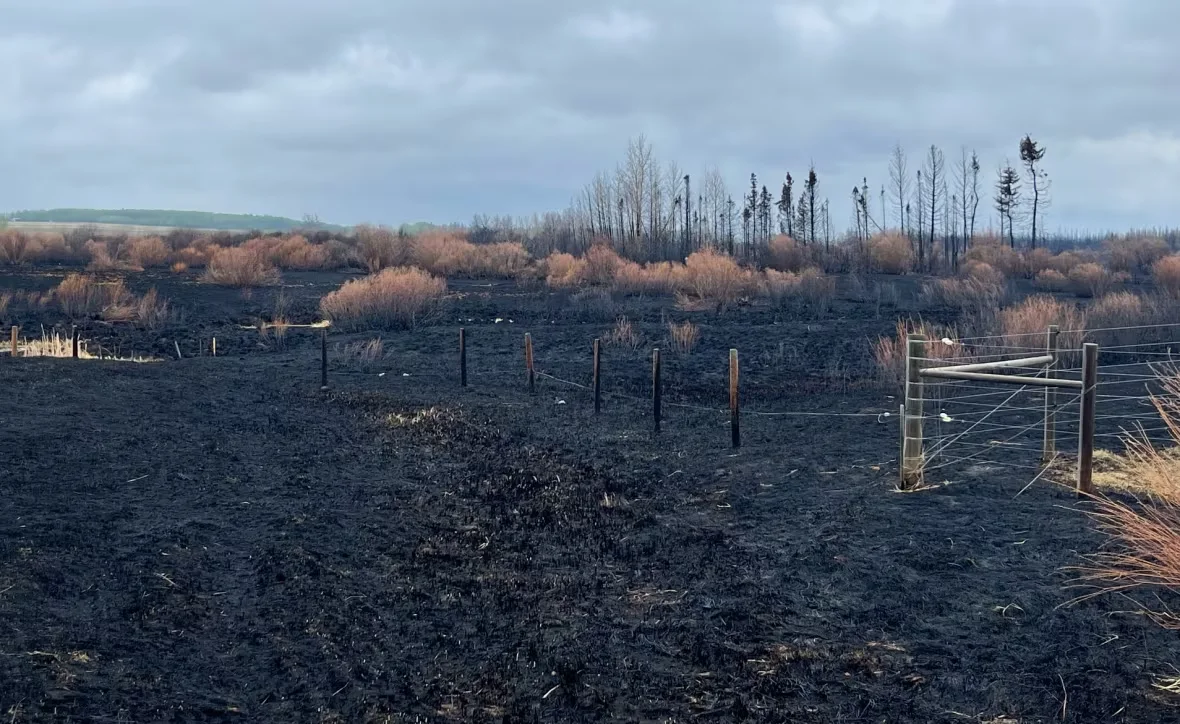
Scorched fields near Wildwood, Alta. (Emily Fitzpatrick/CBC)
Smith also said that support form the federal government would be assessed in helping First Nations communities return back to their communities.
"The Disaster Recovery Program allows for the federal government to assist us in financial aid if we get to that point," Smith said.
On Twitter Sunday, Smith said she met earlier in the day with NDP Leader Rachel Notley, "to share experiences of how to support Albertans during these wildfires." The premier said she'd continue to keep Notley informed on the wildfire situation.
WATCH: Family 'shell-shocked' after losing home to wildfires
In a statement, Notley said she "met briefly" with Smith, offering her insights and experience from the 2016 Fort McMurray wildfire.
Notley was premier during the Fort McMurray fire, which forced 80,000 people to flee their homes and became the most expensive natural disaster in Canadian history for insurance providers.
Hot, dry and windy conditions have been cited as the main challenge in tackling the wildfires.
MUST SEE: Safeguard your home, community against wildfires before it's too late
"We are still seeing relatively brisk gusty winds blowing from the southeast," Staunton said, with winds expected to reach between 40 to 50 kilometres per hour throughout Sunday.
"We do expect those winds to ease somewhat through Monday [and] Tuesday, we are expecting much weaker winds compared to what we've seen over the past few days."
Temperatures have also dipped between low teens and 20 C, compared to earlier in the week which saw temperatures as high as 30 degrees.
Western Canada has been severely impacted by wildfires in recent years, including in 2021 when a blaze in British Columbia killed two and destroyed the town of Lytton.
In 2019, the Chuckegg Creek wildfire forced thousands of people from their homes in northwestern Alberta and destroyed more than a dozen homes on the Paddle Prairie Métis Settlement.
By late August of 2019, the fire was under control. It burned more than 331,000 hectares. The province declared it out in October of 2020.
As our climate changes, experts warn that the frequency and intensity of wildfires will increase.
Average temperatures across the Prairies are 1.9 C warmer since the mid-20th century, according to Environment and Climate Change Canada.
Thumbnail image courtesy of Triss, taken in Drayton Valley, Alta.
This article, written by Mrinali Anchan, was originally published for CBC News.